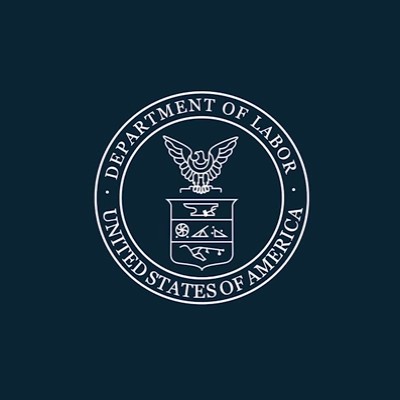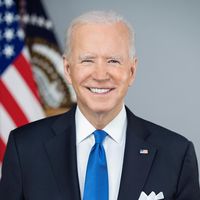The Diverging Paths of Trump and Harris: A Looming Food and Economic Crisis
November 1, 2024, 9:47 pm

Location: United States, District of Columbia, Washington
Employees: 10001+
Founded date: 1913

Location: United States, District of Columbia, Washington
Employees: 1001-5000
Total raised: $500K

Location: United States, California, San Francisco
Employees: 1001-5000
Founded date: 2011
The upcoming U.S. presidential election is not just a battle of personalities; it’s a clash of ideologies that could reshape the landscape of food, trade, and public health. With Kamala Harris and Donald Trump at the helm of their respective campaigns, the stakes are high. Each candidate’s agenda presents a different vision for America’s future, particularly in the food industry, where policies could either nourish or starve the economy.
As the election approaches, uncertainty looms like a thick fog. Harris aims to tackle price gouging and raise the federal minimum wage, while Trump proposes sweeping tariffs and a return to protectionism. Both strategies come with their own set of risks and rewards, and the implications for consumers and businesses are profound.
Harris’s plan to combat price gouging seeks to empower the Federal Trade Commission and state attorneys general. It’s a move to protect consumers from unfair pricing, especially during emergencies. But will it be enough? Critics argue that her proposals may be too vague and overly reliant on congressional approval, which seems optimistic in today’s polarized climate.
On the other hand, Trump’s approach is a double-edged sword. His plan to impose tariffs ranging from 10% to 60% on imports, particularly from China, could bolster domestic manufacturing. However, it risks inflating prices for everyday goods. The Consumer Brands Association warns that such tariffs could hurt U.S. companies that rely on global supply chains. A coffee lover might find their morning brew suddenly more expensive, while manufacturers grapple with rising costs.
The food industry is particularly vulnerable. Trump's tariffs could lead to a cascade of price increases, impacting everything from groceries to restaurant bills. Harris’s supporters argue that her targeted tariffs would support American workers without driving up costs. Yet, the reality is more complex. The food supply chain is intricate, and any disruption could have ripple effects.
Public health is another battleground. Trump’s potential appointment of Robert F. Kennedy Jr. to key health positions raises eyebrows. Kennedy’s aggressive stance on agricultural chemicals and public health could lead to significant changes. He advocates for banning harmful substances already prohibited in other countries. But skepticism abounds. Can such sweeping reforms be realistically implemented? Many experts doubt it.
The uncertainty extends to the broader economy. Recent job growth figures reveal a troubling trend. The U.S. added only 12,000 jobs in October, the slowest rate since Biden took office. Hurricanes and labor strikes played a role, but the underlying weakness is concerning. Households are feeling the pinch, and inflation continues to erode purchasing power.
As voters head to the polls, economic conditions weigh heavily on their minds. Rising costs and stagnant wages create a perfect storm of discontent. The labor market, while still strong, shows signs of cooling. Analysts warn that a prolonged slowdown could threaten economic stability.
The candidates’ responses to these challenges reveal their core philosophies. Harris’s focus on supporting small businesses and investing in resilient food supply chains aims to create a more equitable economy. However, her proposals require bipartisan support, which is increasingly hard to come by.
Trump’s strategy, rooted in protectionism, seeks to shield American workers from foreign competition. Yet, this approach risks alienating allies and disrupting established trade agreements. The International Dairy Foods Association warns that new tariffs could provoke retaliatory measures from trading partners, jeopardizing billions in exports.
The stakes are high, and the consequences of these divergent paths could be dire. If Congress remains gridlocked, states may take matters into their own hands, leading to a patchwork of regulations that complicate business operations. For food manufacturers and retailers, navigating this landscape could become a nightmare.
As the election draws near, the candidates’ economic proposals will be scrutinized. Harris’s plans to increase the corporate tax rate and expand deductions for startups contrast sharply with Trump’s desire to lower taxes for domestic manufacturers. Each approach carries its own risks, and the potential for increased deficits looms large.
Immigration policy also plays a crucial role in the food industry. Trump’s hardline stance on undocumented workers could exacerbate labor shortages in agriculture. Meanwhile, Harris’s commitment to providing legal access for workers is essential for maintaining a robust food supply chain.
In the end, the election is not just about who will occupy the White House. It’s about the future of America’s food system, economy, and public health. The choices voters make will reverberate through every grocery store aisle and restaurant table.
As the clock ticks down to election day, the question remains: Which path will America choose? Will it embrace a vision of protectionism and tariffs, or will it opt for a more equitable approach that seeks to uplift all citizens? The answer will shape the nation for years to come. The stakes are high, and the outcome uncertain. In this political landscape, every vote counts.
As the election approaches, uncertainty looms like a thick fog. Harris aims to tackle price gouging and raise the federal minimum wage, while Trump proposes sweeping tariffs and a return to protectionism. Both strategies come with their own set of risks and rewards, and the implications for consumers and businesses are profound.
Harris’s plan to combat price gouging seeks to empower the Federal Trade Commission and state attorneys general. It’s a move to protect consumers from unfair pricing, especially during emergencies. But will it be enough? Critics argue that her proposals may be too vague and overly reliant on congressional approval, which seems optimistic in today’s polarized climate.
On the other hand, Trump’s approach is a double-edged sword. His plan to impose tariffs ranging from 10% to 60% on imports, particularly from China, could bolster domestic manufacturing. However, it risks inflating prices for everyday goods. The Consumer Brands Association warns that such tariffs could hurt U.S. companies that rely on global supply chains. A coffee lover might find their morning brew suddenly more expensive, while manufacturers grapple with rising costs.
The food industry is particularly vulnerable. Trump's tariffs could lead to a cascade of price increases, impacting everything from groceries to restaurant bills. Harris’s supporters argue that her targeted tariffs would support American workers without driving up costs. Yet, the reality is more complex. The food supply chain is intricate, and any disruption could have ripple effects.
Public health is another battleground. Trump’s potential appointment of Robert F. Kennedy Jr. to key health positions raises eyebrows. Kennedy’s aggressive stance on agricultural chemicals and public health could lead to significant changes. He advocates for banning harmful substances already prohibited in other countries. But skepticism abounds. Can such sweeping reforms be realistically implemented? Many experts doubt it.
The uncertainty extends to the broader economy. Recent job growth figures reveal a troubling trend. The U.S. added only 12,000 jobs in October, the slowest rate since Biden took office. Hurricanes and labor strikes played a role, but the underlying weakness is concerning. Households are feeling the pinch, and inflation continues to erode purchasing power.
As voters head to the polls, economic conditions weigh heavily on their minds. Rising costs and stagnant wages create a perfect storm of discontent. The labor market, while still strong, shows signs of cooling. Analysts warn that a prolonged slowdown could threaten economic stability.
The candidates’ responses to these challenges reveal their core philosophies. Harris’s focus on supporting small businesses and investing in resilient food supply chains aims to create a more equitable economy. However, her proposals require bipartisan support, which is increasingly hard to come by.
Trump’s strategy, rooted in protectionism, seeks to shield American workers from foreign competition. Yet, this approach risks alienating allies and disrupting established trade agreements. The International Dairy Foods Association warns that new tariffs could provoke retaliatory measures from trading partners, jeopardizing billions in exports.
The stakes are high, and the consequences of these divergent paths could be dire. If Congress remains gridlocked, states may take matters into their own hands, leading to a patchwork of regulations that complicate business operations. For food manufacturers and retailers, navigating this landscape could become a nightmare.
As the election draws near, the candidates’ economic proposals will be scrutinized. Harris’s plans to increase the corporate tax rate and expand deductions for startups contrast sharply with Trump’s desire to lower taxes for domestic manufacturers. Each approach carries its own risks, and the potential for increased deficits looms large.
Immigration policy also plays a crucial role in the food industry. Trump’s hardline stance on undocumented workers could exacerbate labor shortages in agriculture. Meanwhile, Harris’s commitment to providing legal access for workers is essential for maintaining a robust food supply chain.
In the end, the election is not just about who will occupy the White House. It’s about the future of America’s food system, economy, and public health. The choices voters make will reverberate through every grocery store aisle and restaurant table.
As the clock ticks down to election day, the question remains: Which path will America choose? Will it embrace a vision of protectionism and tariffs, or will it opt for a more equitable approach that seeks to uplift all citizens? The answer will shape the nation for years to come. The stakes are high, and the outcome uncertain. In this political landscape, every vote counts.